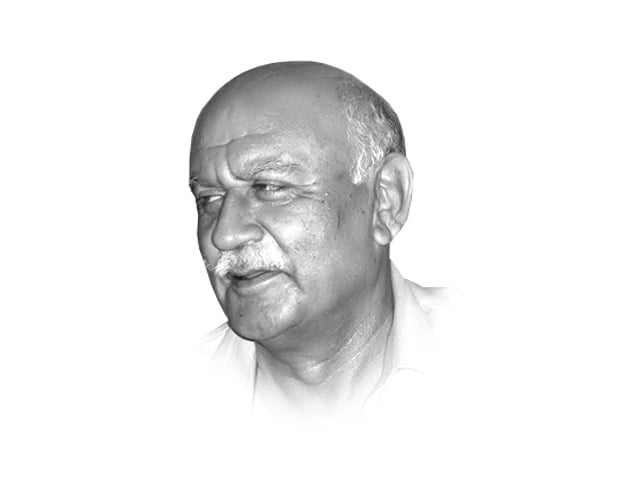
To understand this difference, let us refer to the dictionary meaning of the word ‘police’; most of us are familiar with the noun ‘police’ but few recall it as a verb. Webster’s dictionary defines the word (briefly) as “an organised civil force which maintains order, detecting, and preventing crimes, and enforcing laws”. It defines policing as “a localised operation involving regular forces which, without a declaration of war, acts against an individual or group(s), violating laws, or impinging on the rights of other citizens, or endangering peace and security”. For the linguist, the operative words here might be: a) “detecting and preventing crimes”, which is certainly not a military function; and b) “without declaration of war”; but what does it really mean?
Essentially, the armed forces are trained and equipped to fight the armed forces of another country. Since they (armed forces) are also trained in conducting guerrilla operations and CGOs during an armed conflict, they are also suitable for CGOs against their own insurgents. They are also exposed to fighting in built-up areas against a recognisable enemy, but they have no idea of how to enforce laws, or police in urban areas.
If CGOs are difficult to plan and execute without accurate intelligence, CUTOs are virtually impossible to carry out without extremely accurate and very timely intelligence.
In my very first article on terrorism, I mentioned how the UK was rumoured to have tackled the IRA problem and brought the group to the negotiating table. I also mentioned that it took the British SAS and supporting personnel some years to infiltrate the IRA and that they must have taken part in terrorist attacks to win the confidence of the IRA.
Any attempt to infiltrate the TTP will be just as difficult and infiltrators will have to work hard to convince the TTP that the infiltrators are as bad as the real terrorists to gain the latter’s trust. But we (might) have an advantage in that we (might) already have some reliable source/informer in place. Whether we do or not; whether we infiltrate or subvert a ‘source’ to provide accurate and timely information, the problems of security forces do not end with obtaining the information.
Let us take an example. Suppose police forces receive extremely reliable, confirmed, accurate and timely information that a group of five terrorists are residing in house number X, street number Y, Gulberg III, Lahore. This is a heavily populated residential and commercial area through which there is a constant flow of heavy traffic. Security forces cannot vacate or isolate even a portion of it to restrict the flow of traffic. Not only will any such measure bring that portion of the city to a grinding halt, it will result in alerting the terrorists and, in the process, creating exactly the kind of chaos and panic during which a small army could escape capture.
It is inconceivable that the terrorists would not have an early warning system set up. What is worse is that even surreptitious movements by a visibly and heavily armed police force in such an area, if picked up by a casual observer, could result in spreading panic, thus alerting the terrorists.
While our detection, prevention and intelligence gathering techniques are becoming increasingly sophisticated and technologically advanced, we are nowhere close to the technological support systems that our counterparts in developed countries possess.
Obviously, our intelligence and security agencies cannot share their capabilities with the public, whatever these might be. One example of our violating this rule and its outcome occurred in 2003. In December 2003, there was an attempt on former president General (retd) Pervez Musharraf’s life. A bomb on a bridge was to blow up by remote control but, inexplicably, was delayed by a few seconds and exploded without causing damage to human life. For some reason known only to him, Shaikh Rasheed Ahmed, the then information minister, informed the public that Musharraf’s escort vehicles were equipped with a jamming device, which caused the delay.
Days later, at a location only a few hundred yards from the first, a second attempt was made, manually. Two vehicles were lined up a hundred metres apart; each had explosives behind the front mudguard, intending to ram his vehicle. This failed due to the intrepidity of a lone policeman who grew suspicious of the fact that the driver started his vehicle as soon as he heard sirens approaching. The policeman lost his life, but caused the split-second delay that saved Musharraf.
The same analogy is applicable to sharing information on successful operations. Sharing the success of an operation could jeopardise a source. Not only might information from that source dry up, it might also endanger his life. In case of the latter, an added complication might occur since a ‘source’ is living dangerously anyway. Endangering a source due to similar stupidity is hardly likely to encourage other sources in place, or potential ones who are, in fact, certain to be deterred from assisting security forces in future.
Published in The Express Tribune, December 19th, 2015.
Like Opinion & Editorial on Facebook, follow @ETOpEd on Twitter to receive all updates on all our daily pieces.









































COMMENTS
Comments are moderated and generally will be posted if they are on-topic and not abusive.
For more information, please see our Comments FAQ